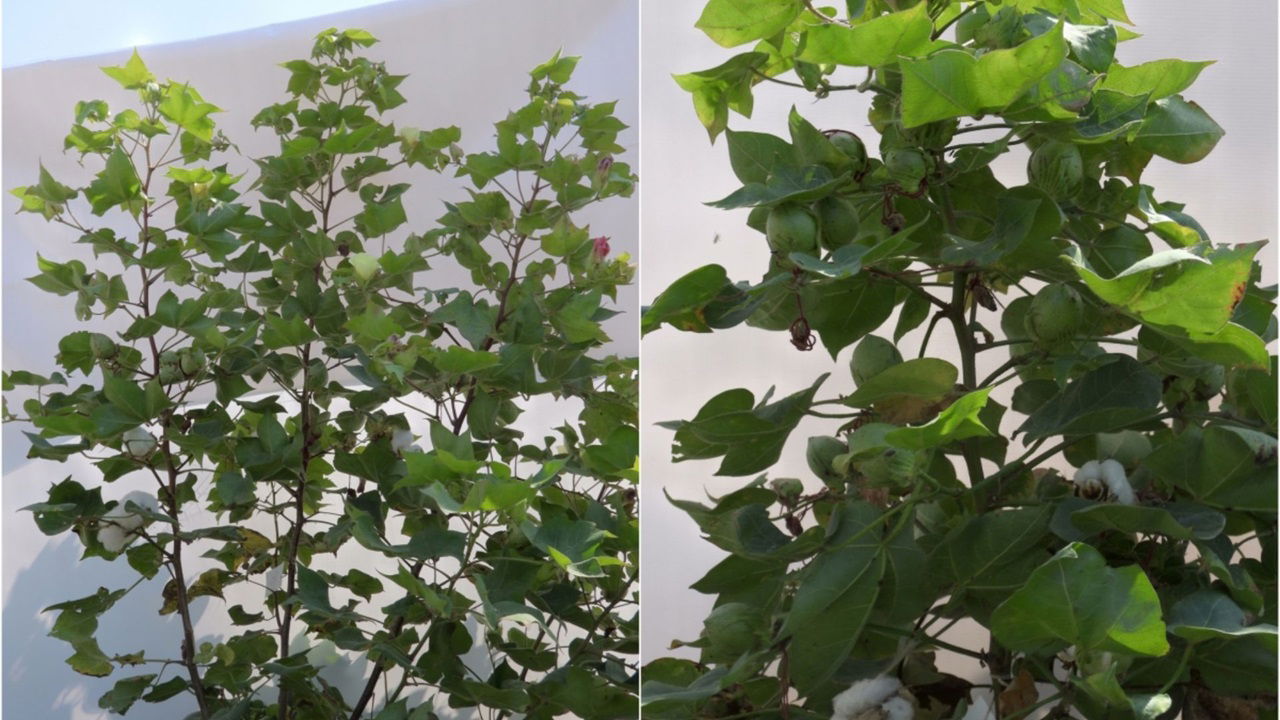
Punjab Agricultural University (PAU), Ludhiana has achieved a global first by successfully using the wild cotton species Gossypium armourianum to develop resistance against Cotton Leaf Curl Disease (CLCuD) in American cotton. This breakthrough, announced by Dr. Satbir Singh Gosal, Vice-Chancellor of PAU, holds significant potential for high and stable cotton production in North India, akin to the transformative effects seen with transgenic Bt-cotton.
Dr. Gosal highlighted the severe impact of CLCuD on American cotton in Punjab, Haryana, Rajasthan, and neighboring Pakistan, with occurrences also reported in China. The disease poses a major threat to cotton farming in these regions.
Referencing the International Cotton Advisory Committee (ICAC), Dr. Ajmer Singh Dhatt, Director of Research at PAU, pointed out that India, Pakistan, and China together produce nearly half (49%) of the world’s cotton. These countries are home to about 85% of the global cotton farming population, making effective CLCuD management crucial for the sustainability of the cotton industry in Asia and beyond.
Dr. V.S. Sohu, Head of the Department of Plant Breeding and Genetics at PAU, discussed the economic ramifications of this whitefly-transmitted virus. Between 1992 and 1997, Pakistan experienced losses amounting to approximately USD 5 billion, while India saw a 40% reduction in cotton yield. The disease not only diminishes yield but also degrades the quality of cotton fiber, a key economic product of the crop.
Dr. Pankaj Rathore, Principal Cotton Breeder and former Director of PAU’s Regional Research Station in Faridkot, detailed the symptoms of CLCuD. Initial signs include the thickening of small veins on young leaves, progressing to a network of small veins, upward or downward leaf curling, and in severe cases, cup-shaped outgrowths on the leaf undersides. These symptoms lead to stunted plants with fewer bolls. Dr. Rathore emphasized that developing CLCuD-tolerant cotton varieties is essential, given that new viral strains have made all existing varieties, including transgenic Bt-cotton hybrids, susceptible.
Dr. Dharminder Pathak, Principal Cotton Breeder at PAU, explained the challenges in maintaining resistance in crop breeding. Wild relatives and related species of crops are valuable sources of important genes. PAU embarked on a wide-hybridization program nearly 20 years ago to integrate CLCuD resistance genes from wild cotton species into American cotton. Despite numerous barriers, this initiative has now yielded success. PAU has developed elite American cotton breeding lines with resistance to CLCuD, derived from Gossypium armourianum.
This pioneering work by PAU represents a major milestone in global cotton research and promises to boost cotton production stability in North India, offering hope for the future of cotton farming in the region.
















